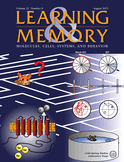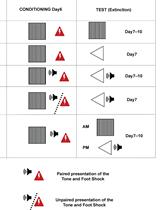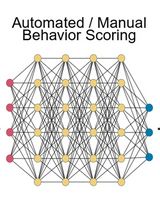- EN - English
- CN - 中文
Olfactory Recognition Memory Test in Mice
小鼠嗅觉认知记忆测试
发布: 2016年05月05日第6卷第9期 DOI: 10.21769/BioProtoc.1803 浏览次数: 9474
评审: Soyun KimTifany DesprezPascal Fossat
Abstract
Olfactory memory is an ethologically relevant task that relies on a mouse’s innate ability to use olfaction to forage for food (Zou et al., 2015), and identify safe foods. Although many of the same brain areas involved in other forms of memory are also involved in olfactory memory, the mechanisms are different (Sanchez-Andrade et al., 2005; Tong et al., 2014). Here, we describe one way to test olfactory memory in mice. The protocol described can be used to test long-term memory (memory which requires de novo protein synthesis) or short term memory by adjusting the delay time between the training session and the recall session (Freedman et al., 2013) and has been designed to mimic the single presentation of the social recognition paradigm. This paradigm relies on the mouse’s innate tendency to investigate a novel scent more than a familiar scent. Transgenic NR2A overexpression mice are known to have impaired long-term olfactory memory, but intact short-term memory, and are used here to demonstrate how one form of impaired olfactory memory may appear. Other genetically or chemically manipulated mice may be used in place of the transgenic mice used here.
Background
Materials and Reagents
- Filter paper (Bio-Rad Laboratories, catalog number: 1703967 )
- Pipet or syringe (BD, catalog number: 309625 )
- Low odor epoxy or glue, or tape to seal the scent cup
- Adult 3-8 months old mice, for the testing group (transgenic NR2A overexpression mice) and wild type mice for the control group (referred to as “subject mouse”)
- 70% ethanol solution
- Fresh or canned, non-expired 100% juice samples [pineapple (Dole), orange (Tropicana), 100% lemon and 100% lime juices] (see Figure 1)
Equipment
- Clean mouse cages identical to the home cage (7.5 in x 11 in x 5 in), one for each subject mouse per phase
- Clear Plexiglas to cover the cage top (so the mice cannot climb out)
- Small plastic container with a lid (i.e., a plastic petri dish, 35 mm x 10 mm) (Thermo Fisher Scientific, catalog number: FB0875711YZ , or other similar replacement)
- Drill with small (1 mm) drill bit or 18 g needle (BD, catalog number: 305196 ) for making holes in top of scent cup
- Digital recording camera
- Laboratory timer
- Stopwatch for recording investigation times

Figure 1. Experimental set-up for the olfactory recognition task. For the olfactory recognition task, a selection of juices (pineapple, orange, lemon and lime), a small Petri dish, a syringe and an empty clean mouse cage are used.
Procedure
文章信息
版权信息
© 2016 The Authors; exclusive licensee Bio-protocol LLC.
如何引用
Jacobs, S. A., Huang, F., Tsien, J. Z. and Wei, W. (2016). Olfactory Recognition Memory Test in Mice. Bio-protocol 6(9): e1803. DOI: 10.21769/BioProtoc.1803.
分类
神经科学 > 行为神经科学 > 学习和记忆
您对这篇实验方法有问题吗?
在此处发布您的问题,我们将邀请本文作者来回答。同时,我们会将您的问题发布到Bio-protocol Exchange,以便寻求社区成员的帮助。
提问指南
+ 问题描述
写下详细的问题描述,包括所有有助于他人回答您问题的信息(例如实验过程、条件和相关图像等)。
Share
Bluesky
X
Copy link












